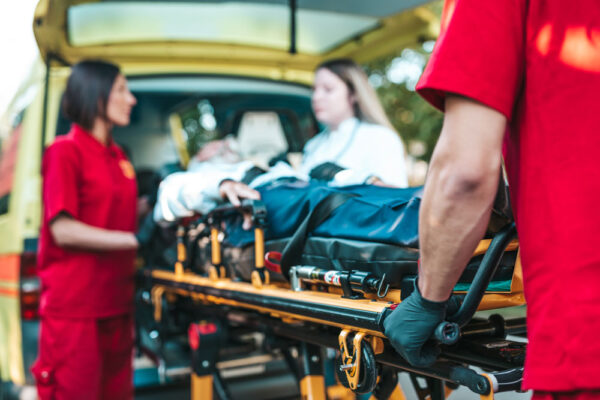In life, we never give much thought to what we would do or how we would react if first on the scene of a road traffic collision (RTC). As commercial vehicle drivers, we see many incidents on public highways, some of which clearly do not have good outcomes.
We are 50% more likely to be involved in an RTC due to the miles we cover so, why are we so unprepared for what may happen? The fact is that we are rarely involved in serious incidents so we never really believe it will happen to us; but, what if it did?
We build into all our Driver CPC sessions the importance of looking after yourself and managing your road risk. It’s a good message to put out as hopefully it reinforces the fact that it could happen and the need to always try to negate the amount of risk you put yourself in is important. Don’t forget, by taking this session, you not only gain seven hours of Driver CPC but, also gain a Level 3 Emergency First Aid qualification which lasts for three years.
 Managing risk isn’t as complex as it sounds. Basically, if we keep within the rules and regulations as commercial vehicle drivers, we should be ok. So, why do we have accidents? Usually but not always, it involves someone not keeping within the rules, someone not sticking to speed limits, someone using a mobile device, someone driving tired, or someone tailgating. If we mitigate risk and stop taking chances, this will reduce the possibility of being involved surely?
Managing risk isn’t as complex as it sounds. Basically, if we keep within the rules and regulations as commercial vehicle drivers, we should be ok. So, why do we have accidents? Usually but not always, it involves someone not keeping within the rules, someone not sticking to speed limits, someone using a mobile device, someone driving tired, or someone tailgating. If we mitigate risk and stop taking chances, this will reduce the possibility of being involved surely?
If you do find yourself in a position to be able to help, what are the first steps? The basic principle in any RTC is to make yourself safe first, take a step back before taking a step forward, and think about your safety. This could be something as simple as using hazard warning lights to alert others. Once safe, what else can we do? Giving concise information regarding the incident is vital, response times are important when it comes to saving lives in RTCs so, location information is key. The use of GPS, mapping, and What 3 Words will all play a role in getting emergency services to you quickly. Not forgetting network signage and the trusty paper map book! The information you give will shape the whole event, don’t forget, there could be hazardous goods involved, electric vehicles, passenger-carrying vehicles and potential for fire.
You really don’t have to do much more than report the incident however, if you decide to get involved further, ask yourself “Is it safe for me to get involved and will I make a difference”? If the answer is “No” then walk away, think about your personal safety.
We spoke about “taking a step back before taking a step forward” Why? It may not be totally obvious but, you need to think about your physical and mental well-being in this kind of situation. Physical injury is obvious, but not so obvious is the mental well-being issue. What we see when entering an RTC may have a lasting effect on us mentally. In short, you could see obvious deceased, horrific injuries, human suffering, and people in obvious distress, this isn’t easy to put to the back of your mind, PTSD can manifest a long time after the event.
Looking at the “History of the Event” will give clues on potential injuries and in an RTC you can expect to see the full spectrum from broken bones to severe bleeds to confusion and aggression. Where do you start and how do you figure out who needs help first? Usually, the quiet casualty is your priority as they may not be breathing normally although, in an RTC there could be multiple casualties so what then? Doing something for someone is far better than doing nothing at all, the fact you can offer reassurance to an injured person can go a long way to keeping them calm until help arrives, and you don’t always have to open up your first aid kit!
Common injuries are back and spinal due to the speeds involved, immobilising a casualty’s neck could prevent further spinal damage, keeping the casualty still is extremely important and not moving them unless there is imminent danger even more so.
Catastrophic bleeding (major blood loss) is also common due to impact etc, any severe blood loss needs to be stopped as quickly as possible usually by applying direct pressure and in some instances the use of tourniquets’ when the bleed can’t be stopped by direct pressure alone.
I mentioned “Breathing normally” earlier, so what is normal breathing in a first aid sense? For an adult we look for 2 to 4 breaths in a 10-second period so, if the casualty is unconscious and not breathing normally we should start CPR, now there is a whole new aspect!
If you would like to know more and take part whether you are a driver, employer, employee or part of any organisation, please feel free to call or email for further information on all our sessions, for Driver CPC, ADR and First Aid in Sheffield.
